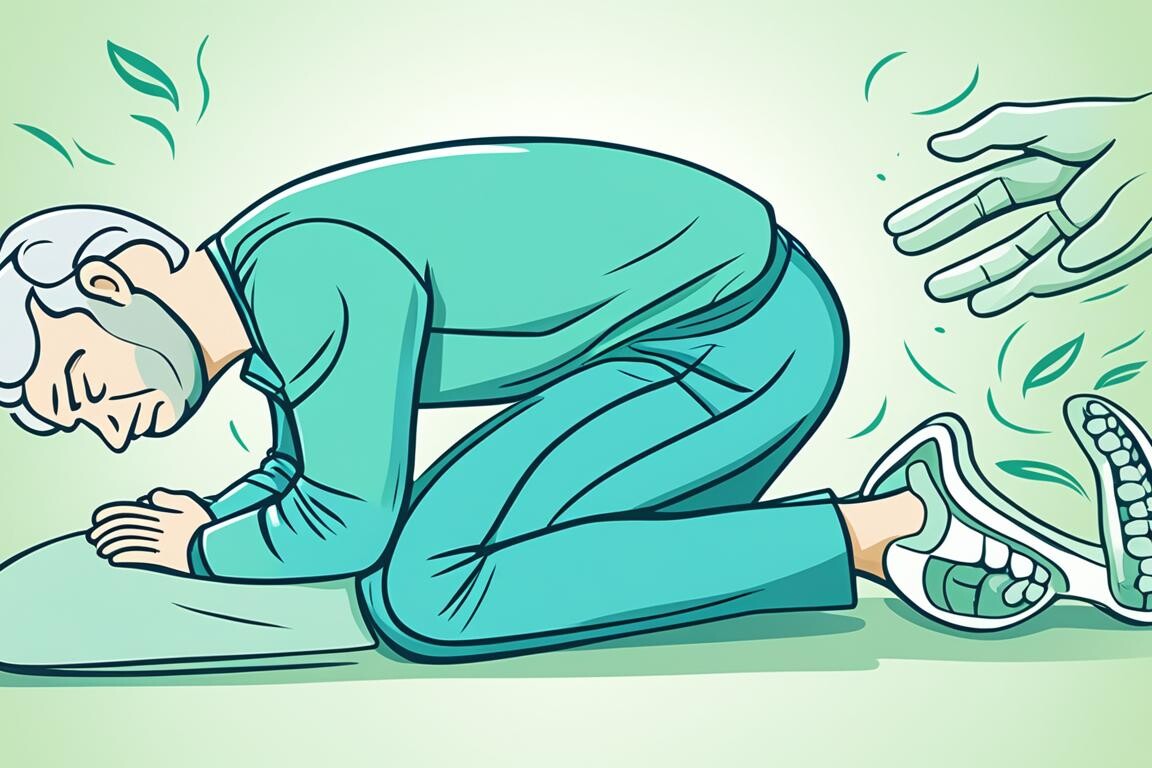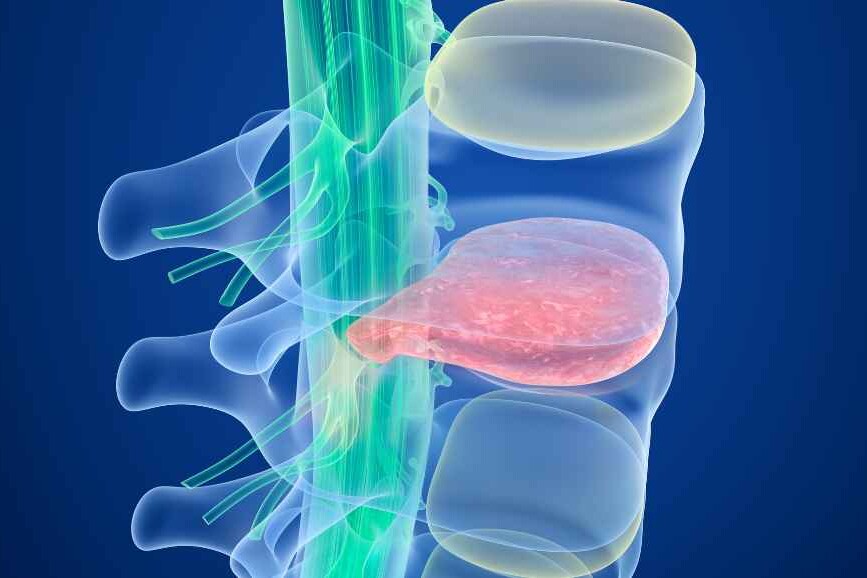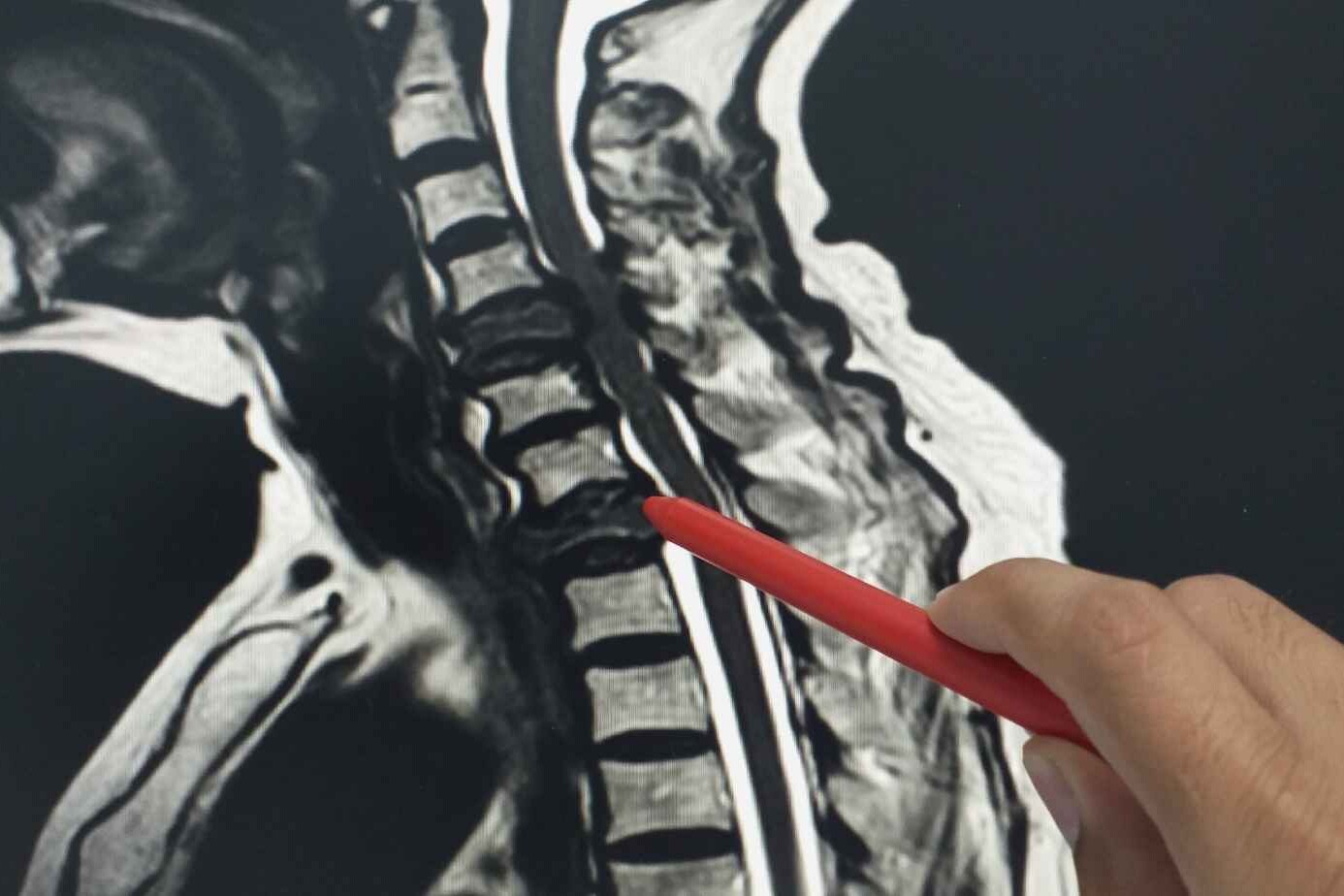If you’re one of the many adults dealing with ongoing back pain, there’s hope. Pain and spine specialists have the skills to help you. They can make your life better by creating a plan that doesn’t always need surgery.
These doctors know a lot about back pain and its causes, like disc problems, sciatica, and spinal stenosis. They offer many non-surgical treatments and other therapies. This helps you use less medicine and avoid more serious procedures.
A pain and spine specialist will work with you to find out what’s causing your pain. Then, they’ll make a plan just for you. This plan might include physical therapy, injections, and other treatments. These can help you feel better and move more easily.
Table of Contents
ToggleUnderstanding Chronic Back Pain
Chronic back pain is a long-lasting and tough condition. It can really affect how you live your life. It’s not just for older people; it can also come from injuries or other health issues. Knowing what causes chronic back pain is key to managing the pain well.
Common Causes of Chronic Back Pain
Some common causes of chronic back pain are:
- Arthritis of the spine, which can cause inflammation and stiffness in the back
- Spinal stenosis, a condition that leads to the narrowing of the spinal canal and can put pressure on nerves
- Disc problems, such as a herniated or bulging disc, which can cause pain and discomfort
- Myofascial pain syndrome, a chronic condition that involves muscle pain and tightness
When to Seek a Second Opinion
If your doctor has tried all they can and you’re still in pain, getting a second opinion might help. A specialist in back pain can give you a clearer picture of what’s causing your pain. This can lead to a better treatment plan for you.

Chronic back pain is complex and requires a team effort to manage. Working with your healthcare team and getting a second opinion when needed is crucial. This approach can help you find the right treatment and improve your quality of life.
Nonsurgical Treatment Options
For people with chronic back pain, there are many nonsurgical ways to feel better and live better. Physical therapy and a good home exercise plan are key to managing back pain.
Physical Therapy and Home Exercise Program
Physical therapy is very important for chronic back pain. Therapists create exercise plans just for you, based on your symptoms and comfort. These exercises help with core strength, flexibility, posture, and aerobic fitness at your own pace.
Doing exercises at home is crucial for keeping your spine strong and stable. Your therapist will tell you which exercises to do and how often. This way, you can keep improving even when you’re not in the clinic.
- Core strengthening exercises to improve overall spinal stability
- Stretching and flexibility movements to enhance range of motion
- Posture retraining techniques to improve alignment and reduce strain
- Low-impact aerobic exercises to increase cardiovascular fitness

Working with your physical therapist and doing exercises at home helps you take charge of your chronic back pain. It also boosts your overall health and well-being.
Mindfulness and Meditation for Pain Management
Living with chronic back pain is tough on both your body and mind. A rehabilitation psychologist can help you with this. They suggest mindfulness, meditation, yoga, tai chi, and other strategies to control your nervous system and how it reacts to pain.
Mindfulness meditation is a big help for managing chronic pain. Studies show it can make life better and help you deal with pain challenges. It’s a key part of pain management.
This type of meditation helps you stay in the moment without judging yourself. You can watch your pain and feelings without getting too caught up. Learning to be kind to yourself helps lessen the emotional pain that makes physical pain worse.
Research also shows that mindfulness meditation can lessen pain by changing how the brain works. It can reduce the brain’s control over pain and increase how you feel sensations. This means it can change how you respond to pain, helping you manage it better.
If you have chronic back pain, fibromyalgia, migraines, or other ongoing pain, mindfulness and meditation can be very helpful. They can give you more control over your symptoms and improve your well-being.

Managing pain is a complex process. Working with pain and spine experts can help you find the best strategies for you. This includes mindfulness and meditation, among other approaches.
Role of Diet and Lifestyle Modifications
Keeping a healthy diet and lifestyle is key to managing chronic back pain. By changing your diet to an anti-inflammatory diet, you can find relief. Foods high in trans fats, refined sugars, and processed items can make inflammation and back pain worse. But, eating lots of fruits, veggies, whole grains, and lean meats can cut down on inflammation and boost spine health.
It’s also vital to manage your weight well. Being overweight can put extra stress on your spine, causing pain. A nutrition expert can help you make better food choices and reach your weight goals.
- Prioritize an anti-inflammatory diet with plenty of fruits, vegetables, whole grains, and lean proteins.
- Limit processed foods, refined carbohydrates, and sugary drinks that can make inflammation worse.
- Drink at least 2-3 liters of water a day to stay hydrated.
- Think about adding supplements like omega-3s, turmeric, or ginger to support spine health.
Changing your lifestyle habits like pacing activities, quitting smoking, and getting enough sleep can also help with pain. Breaking up your activities and resting can prevent more strain on your spine. Stopping smoking is crucial because it can lead to osteoporosis, arthritis, and other conditions that make back pain worse.

Slowly and steadily changing your diet and lifestyle can greatly improve your chronic back pain. Talk to your doctor or a specialist to create a plan that fits you best.
Injection-Based Treatments
If you’re dealing with chronic back pain, injection treatments like trigger point injections and nerve blocks might help. These methods target the pain source directly. They can also help figure out the cause if the pain doesn’t go away.
Trigger Point Injections and Epidural Steroid Injections
Trigger point injections put a local anesthetic or steroid right into the muscle knot to relax it. Epidural steroid injections send medicine to the area around the spinal cord to lessen inflammation and pain.
These injections can ease your pain for a while but aren’t meant to be a long-term fix. They aim to help you manage your pain better. This way, you can do more gentle activities like physical therapy and exercises at home.
Nerve Blocks and Ablations
Nerve blocks stop pain signals from a specific nerve, helping with conditions like radiculopathy or spinal stenosis. Nerve ablations use heat to disable the nerve, which can give you lasting pain relief.
Talk to your healthcare provider about the pros and cons of these treatments. They can help you decide if they’re right for managing your chronic back pain.

Exploring Alternative Therapies
Managing chronic back pain can be tough, and traditional treatments might not always work. Luckily, there are other ways to help. Acupuncture and massage are two options worth looking into.
Acupuncture, Massage, and Biofeedback
Acupuncture is an ancient Chinese method that helps with pain and healing. It’s used for many conditions, like chronic back pain and headaches. This therapy works by using tiny needles to balance energy and reduce swelling.
Massage therapy is great for chronic back pain too. It eases muscle tightness, boosts blood flow, and helps you relax. This can lead to less pain and better movement. Many people use massage to help with back and neck pain.
Biofeedback therapy is another option for managing pain. It uses devices to track and give feedback on things like muscle tension and skin temperature. This helps you learn to control your body’s pain response.
These therapies are usually safe and can be used with other treatments like physical therapy and medication. Talking to your doctor can help figure out the best plan for you.
Pharmacologic Treatments for Chronic Pain
Dealing with chronic back pain often means using different kinds of medications. Anti-inflammatories, muscle relaxants, nerve pain medications, and antidepressants can help. They target the root causes of your pain.
Anti-Inflammatories and Muscle Relaxants
Anti-inflammatory drugs like NSAIDs can lessen inflammation and ease pain. Muscle relaxants help with muscle spasms and tension. But, it’s key to talk to your doctor to find the right mix of medications. Each drug has possible side effects.
Your doctor might start you on a low dose and watch how you react. The aim is to control your pain without bad side effects.
Opioids can help with short-term pain but aren’t usually the first choice for long-term back pain. This is because they can lead to tolerance, dependence, and addiction.

By working with your pain and spine specialist, you can try different medications. This way, you can find the best way to manage your chronic back pain.
When is Surgery Recommended for Back Pain?
Surgery is a last resort for chronic back pain. It’s the most invasive and risky option. It should be considered only if the pain’s cause is clear from tests and other treatments haven’t helped. “Red flag” symptoms like bowel/bladder issues, limb weakness, gait problems, or increased reflexes also play a role in deciding if surgery is needed.
Specialists recommend surgery only after trying non-surgical treatments like physical therapy, medications, and injections without success. Most back pain gets better on its own within three months without surgery. But for issues like disk problems, bone overgrowth, or instability, surgery might be the best choice.
Common surgical options for chronic back pain include diskectomy, laminectomy, spinal fusion, and artificial disk replacement. These procedures can help, but up to 40% of back surgeries may not work, leading to “failed back surgery syndrome.” Risks include paralysis, infections, and a long recovery.
Because back surgery is complex and uncertain, getting a second opinion from a spine specialist is wise before surgery. This ensures surgery is the best choice for your condition and needs.
Multidisciplinary Pain and Spine Specialists
Managing chronic pain is easier with a team approach. Pain specialists, spine experts, and healthcare providers work together. They address your condition from different angles, ensuring coordinated care.
The team includes:
- Pain management specialists
- Anesthesiologists
- Specialists in any other medical conditions you may have
- Nurses
- Mental health providers
- Physical and/or occupational therapists
- Social workers
This team aims to cover all parts of your chronic pain, from physical to emotional and psychological. Together, they create a detailed plan to help you manage your pain and enhance your life quality.
Diagnostic Tests for Chronic Pain
If you’re dealing with ongoing pain, your healthcare team might suggest several tests to find the cause. These tests include a detailed physical exam, a neurological exam, and imaging tests and electrodiagnostic studies.
The physical exam checks your overall health, touches the painful spots, and looks at how well you move. The neurological exam tests your reflexes, muscle strength, and how sensitive you are to touch. This helps spot nerve problems.
- Imaging tests like X-rays, MRI, and CT scans show issues like herniated discs, bone problems, or soft tissue injuries.
- Electrodiagnostic studies, including nerve conduction studies and electromyography (EMG), pinpoint nerve conditions causing your pain.
By looking at all these test results, your pain management team can make a plan to fix the main cause of your pain. This way, they can help you find relief.
Interventional Pain Management Procedures
If traditional treatments don’t help with chronic pain, interventional pain management might be the answer. These procedures are minimally invasive. They aim to find and treat the root of your pain. This helps you move past your daily pain and do what you love again.
Some of these procedures include transcutaneous electrical nerve stimulation (TENS), peripheral nerve stimulation, spinal cord stimulation, radiofrequency ablation, and neuromodulation.
- Transcutaneous Electrical Nerve Stimulation (TENS) uses mild electrical currents to stop pain signals. This helps with different kinds of chronic pain.
- Peripheral nerve stimulation targets specific nerves to block pain signals. It’s used for neuropathic pain and complex regional pain syndrome.
- Spinal cord stimulation means putting in a device that sends electrical impulses to the spinal cord. This stops pain signals from getting to the brain.
- Radiofrequency ablation uses heat to block pain signals from certain nerves. It gives long-lasting relief for chronic back pain and arthritis.
- Neuromodulation techniques, like intrathecal drug delivery systems, send medication directly to the affected area. This reduces side effects and improves pain control.
These procedures are made to fit your specific needs. They offer various options to help you manage your chronic pain and enhance your life quality.
Clinical Trials and Research in Pain Management
Researchers are looking into many new ways to manage pain. Pain doctors often run their own studies on patients who haven’t found relief with usual treatments. If you’re interested, talk to your doctor about joining a clinical trial. It could give you access to new treatments.
The NIH HEAL (Helping to End Addiction Long-term) Initiative is funding many clinical trials. They’re working on new pain treatments that don’t involve opioids. This is part of the effort to tackle the opioid crisis and find better ways to handle chronic pain.
- The Advancing Health Equity in Pain Management program works to reduce health gaps in pain care for different groups.
- The Acute to Chronic Pain Signatures program tries to figure out who might develop chronic pain after surgery or injury.
- The Back Pain Consortium (BACPAC) is all about finding new ways to treat chronic low back pain.
- The Discovery and Validation of Biomarkers for Chronic Pain study looks for biomarkers to help pick the right patients for trials.
There’s also the Early Phase Pain Investigation Clinical Network, which tests new non-addictive pain treatments. The HOPE consortium looks into non-addictive options for hemodialysis patients. And the Pain Management Effectiveness Research Network checks out both drug and non-drug ways to ease pain.
These are just a few examples of the exciting work in pain management research and clinical trials. By keeping up with the latest and talking to your pain specialists, you can find out about new treatments that might help you.
The Role of Pain and Spine Specialists
Pain and spine specialists are key for handling chronic pain. They have special training to find the main cause of your pain and create the best treatment plan. They use many treatments and therapies to give you relief that lasts.
Diagnosis and Treatment Planning
At a pain and spine specialist’s office, you’ll get a detailed check-up to find out why you’re in pain. They use the newest tools and methods to spot conditions that might be causing your pain. Then, they make a treatment plan just for you.
Coordinated and Ongoing Care
Pain and spine specialists don’t just give you a diagnosis and treatment. They make sure your care is well-coordinated. They work with other health experts like physical therapists and neurologists to make sure you get the best care. They keep an eye on how you’re doing and change your treatment as needed for ongoing relief.
Working with a pain and spine specialist is a big step towards managing your chronic pain and bettering your life. Visit https://www.phs.org/doctors-services/specialties/pain-spine to learn more about the services they offer.
Conclusion
Pain management and spine specialists in India are key to helping you with chronic pain and better life quality. They use a detailed, multidisciplinary approach. This includes various treatments, procedures, and care plans tailored just for you.
Looking into different options like physical therapy and mindfulness can help you take charge of your health. Specialists in pain and spine care in India also focus on teaching patients and working with other doctors. This ensures a complete and effective care plan
If you’re dealing with chronic back pain, neck pain, or other spinal issues, specialists in pain management and spine care can really help. Their expertise and personal attention can greatly improve your path to pain relief and better health.
FAQ
What are the common causes of chronic back pain?
When should I consider seeking a second opinion for my chronic back pain?
How can physical therapy and a home exercise program help with chronic back pain?
How can mindfulness and meditation techniques help with chronic pain management?
What role does diet and lifestyle play in managing chronic back pain?
What are the different types of injection-based treatments for chronic back pain?
What alternative therapies can help manage chronic back pain?
How do medications fit into the treatment plan for chronic back pain?
When is surgery recommended for chronic back pain?
How do pain and spine specialists work as part of a multidisciplinary team?
What types of diagnostic tests may be recommended to evaluate chronic pain?
What are some of the interventional pain management techniques that may be used?
How can participating in clinical trials help with chronic pain management?
How can pain and spine specialists help manage my chronic pain?
Specialists in pain and spine have the training to treat your pain effectively. They diagnose and treat the root cause with a variety of treatments. This approach often reduces the need for surgery or heavy medication.
Source Links
About The Author

This article is medically reviewed by Dr. Chandril Chugh, Board-Certified Neurologist, providing expert insights and reliable health information.
Dr. Chandril Chugh is a U.S.-trained neurologist with over a decade of experience. Known for his compassionate care, he specializes in treating neurological conditions such as migraines, epilepsy, and Parkinson’s disease. Dr. Chugh is highly regarded for his patient-centered approach and dedication to providing personalized care.
→ Book a consultation to discover which remedies suit your needs best.




